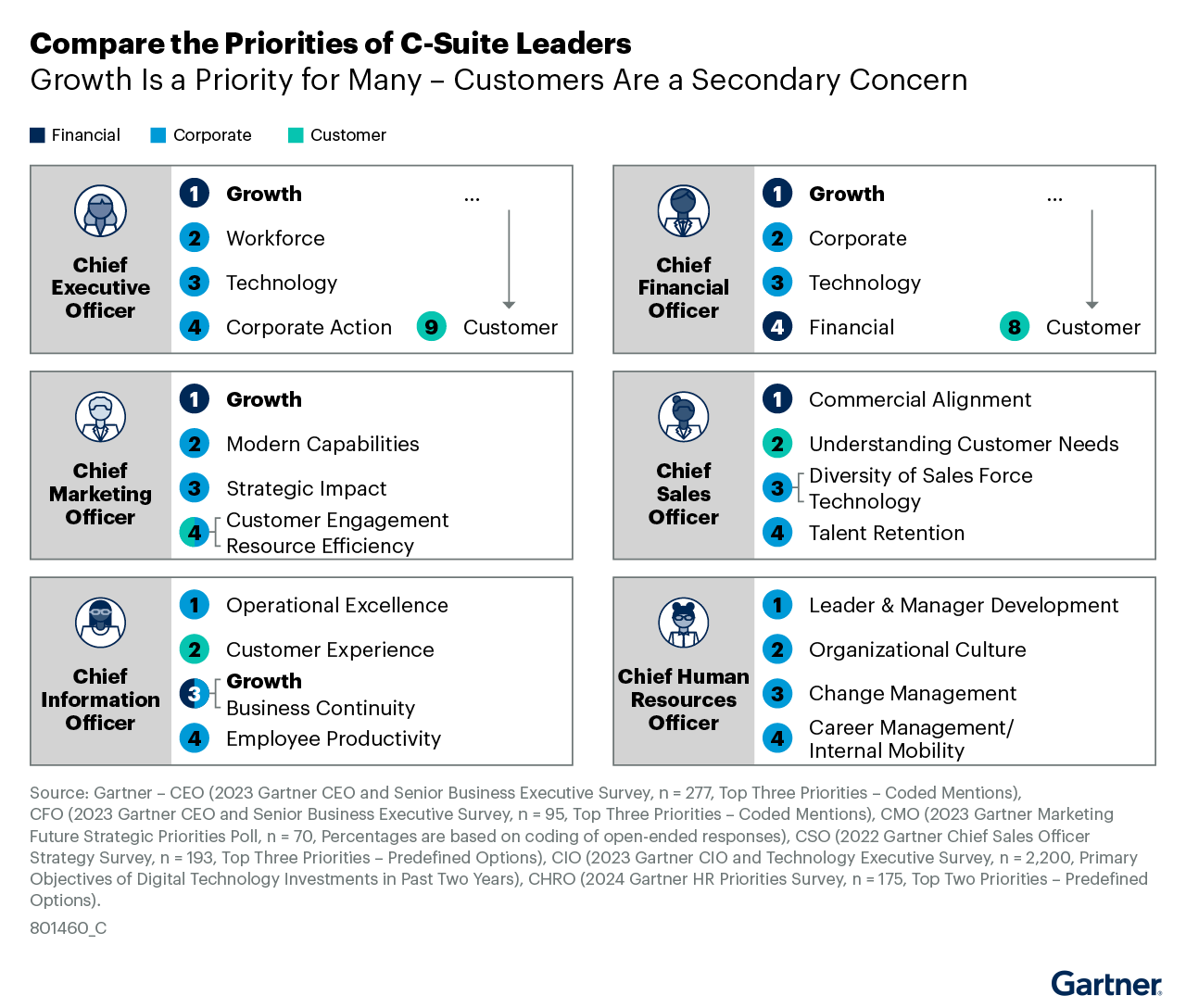Communicating the value of the service and support organization is more important than ever. However, customer service and support leaders often lean heavily on customer experience metrics and outcomes to communicate their function's value.
In contrast, Gartner research shows that CX is not a top priority for the C-Suite just now. Fifty percent of service and support leaders place significant emphasis on increasing their influence across the enterprise in the coming year. For many, achieving this continues to be a challenge, with many service and support leaders failing to convey the real value provided by their function.

To boost executive buy-in and communicate the value of service and support in a more powerful way, service and support leaders need to reframe their narrative to align it with other executive priorities. Only once they have executives' attention can service and support leaders reinforce CX's vital role in driving these outcomes.
To do that, I would make the following three recommendations:
1. Set out service and support business objectives.
Service and support leaders might not get significant in-person time with the C-suite to discuss their functions' outcomes. More often, they can only communicate about their function through others, such as the chief operating officer. Either way, despite the need to communicate succinctly, it's important to start by setting the context.
To do this, take a few seconds to reiterate the service and support function's business objectives and how success is measured. By objectives, we refer not to the service and support leaders' priority of improving CX, but to the answer to the question "Why do you want to improve CX?" Typically, service and support business objectives take one (or multiples of) the following forms:
- Growing the business through cross-selling and upselling;
- Growing and retaining business by driving increased customer loyalty; and
- Reducing cost.
By reiterating these goals, executives can understand the broader context of what the function is trying to achieve, and how this relates back to wider business performance.
2. Reframe the performance narrative to suit your audience.
It's vital that service and support leaders tailor their messaging rather than sharing the same insights with all executives. For example, they should focus on growth when communicating with the C-Suite as a whole, or in one-to-one meetings with the CEO, chief financial officer, and chief marketing officer. Growth is a top priority for these executives, but with their continued focus on cost management, service and support leaders must be careful to show that growth has been achieved without incurring significant additional cost.
When communicating with these executives, customer service and support leaders should lean on strategic metrics that demonstrate direct achievement of growth and cost reduction objectives, such as the following:
- Conversion rate and cross-sell/upsell revenue to demonstrate business growth through sales activities;
- Failing the use of data and analytics to show how service and support interactions drove individual customer retention, customer effort, or value enhancement scores can demonstrate the contribution of service and support to business growth through increased customer loyalty; and
- Cost-per-resolution and support cost as a percentage of company revenue, to demonstrate how the function has maintained or reduced its cost profile while delivering business growth.
Here's another example: When communicating with chief sales officers, service and support leaders should focus on driving alignment on commercial strategy through aligning key performance inducators across functions and developing a clear understanding of who engages with the customer during various stages of the customer journey.
3.Demonstrate how CX contributes to economic success.
As executives' other concerns take priority, the importance of CX has taken a back seat. However, there's a problem with this way of thinking: When CX is neglected, it doesn't hold steady at its current level. As peers' and competitors' CX programs advance and they deliver more value to your shared potential customers, the value to your organization from a neglected CX program decreases. Stagnation is, in reality, deterioration. You can't turn CX on and off like a light switch. It takes time and consistency to improve.
While service and support leaders should reframe their performance narratives around C-suite priorities to capture their attention, they should subsequently emphasize the importance of improving CX because of its contribution to customer loyalty, revenue, and cost reduction and the impact this has on the overall business.
Support this conversation by comparing CX outcomes side by side with the financial outcomes and strategic measures about which the C-suite cares. By helping executives see the contribution CX makes to broader business priorities, service and support leaders can better communicate the value of their function as major contributors to business value and position themselves as CX champions for the wider organization.
Christopher Sladdin is a senior principal analyst in the Gartner Customer Service and Support practice, covering customer service experience, service and support channel strategies, and driving customer loyalty through customer service interactions.